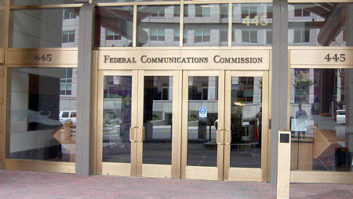
James E. O’Neal Several months ago, I shared my thoughts in this space about our country’s Emergency Alert System, explaining its somewhat tortuous history and underpinnings. In my rant I concluded that the EAS concept was probably a good thing and that the system might actually work as planned; however, I also enumerated some items that probably would preclude it from working as planned. End of story! (Well, not quite.…)
In early March, a false weather alert was rather mysteriously been triggered in Indiana. It warned of an impending tornado (rare in early March, but this has been a really strange winter), and was automatically sent to thousands of radio listeners and television viewers, as well as to cellphones as a text alert and to computers as an email message.
As explained by one area broadcaster, the National Weather Service was reporting some rough weather in western Tennessee and somehow an alert about this got scrambled and relayed by a weather forecasting operation in Wisconsin. Subscriber stations automatically transmitted the warning to their audiences. That service’s defense was “we receive several feeds from various sources in order to make sure we don’t miss any essential warnings. One of those feeds carried the false warning message from the Weather Service.”
No panic, no real harm done; yet this shouldn’t have happened.
The station also noted that “the feed that carried the false warning is not monitored by our desktop application…”
Yep, it’s always the other guy’s fault and/ or we can blame it on a machine. However, when lives and property are at stake, it’s not really a good idea to assume anything and “just let George do it” for you.
In one respect, it’s good that at least some of the folks got the message and maybe took it seriously enough to seek shelter. However, once they learned it was a false alarm, are they going to take such messages seriously next time? It’s back to the old story about “the boy who cried wolf.”

This “wolf cry” prompted a letter from U.S. Senator Dan Coats (R.-Ind.) to the National Oceanic and Atmospheric Administration Administrator, Kathryn Sullivan, calling for an investigation. Sen. Coats noted:
“As a member of the Senate Committee on Commerce, Science, and Transportation, I appreciate the services that NOAA provides, but I also recognize that the inadvertent or intentional dissemination of these alerts in the absence of severe weather diminishes their reliability and effectiveness.”
Coming right on the heels of this tornado flap was a story about an 11-year-old Maryland girl who went missing and triggered an Amber Alert. Fortunately, she was safely located and recovered after a tip to authorities from a South Carolina motel operator.
Both incidents are troubling, as in the first, a false alarm sent out but really wasn’t taken that seriously as clear skies prevailed at the time. The second event revealed something equally upsetting and important, as what I didn’t tell you was that the motel attendant found out about the missing girl through her Facebook account—not from an alert sent out by her favorite station.
These stories pair well with a couple of others from 2013. The first was the day-long lockdown in Boston after the Boston Marathon bombing in April and a few months later a record wildfire situation in Colorado. Despite the serious nature and potential for harm to the public in both of these incidents, EAS was never activated.
The explanation given for this omission in Boston was that the public was able to get all of the information it needed from social media and such news sources as CNN. (I’m not sure why the massive wildfires didn’t rate an EAS alert.)
So, the question I have to ask, given the amount of money and effort broadcasters have to expend to comply with EAS regulations, do we really need to be involved anymore?
As a life-long broadcaster, I never thought I’d be questioning the place of radio and television stations in providing alerts (CONELRAD, then EBS and finally EAS) to protect the public, but I have to wake up and smell the coffee—the public really doesn’t seem rely on us anymore to ring the alarm bell. Times have changed and so have we and so has the public. Back when these alerting systems were developed (especially the first two), most stations had real live operators on duty who were focused on delivering a single program “stream.” Fast forward to the 21st century and its lights-off automation, multiple content delivery, downsizing/employee multitasking, social media and the ubiquitous Internet, and it doesn’t take a multi-million dollar study to drive home the point that it’s not the same world that existed a few decades ago.
Even back then, there were alerting mistakes. The best-remembered was in 1971 when a military operator loaded the wrong “this is not a test” message during a routine EBS system test. The result was that very few broadcasters took it seriously, even though all stations were supposed to have received the message and complied with emergency instructions. Many operators either didn’t see it or just plain ignored it, as it came at the time of the regularly scheduled weekly test. (There were real live people in news and control rooms then.) In the aftermath, we had to face facts—EBS didn’t really work as it was supposed to and the public really wasn’t alerted to the degree necessary had there been an actual emergency, possibly an impending nuclear strike.
EAS seems to be even more problematic. (Check out Wikipedia’s “Emergency Alert System” entry which reports more than a dozen incidences of fairly serious EAS foul-ups; I’m sure there are others that didn’t get reported.)
The bottom line is that even though EAS is well-intentioned, and that while the people who build, install and maintain the systems are all very capable: (a) EAS is not infallible (even when some human monitoring does exist) and (b) EAS has become an archaic, expensive and burdensome system for broadcasters. (It seems to be more of a cash cow for the FCC’s pink slip writers than anything else—earlier this month the commission proposed more than $1.9 million in fines against Viacom, ESPN and NBCUniversal for airing a movie promo containing EAS tones, and there are some recent rumblings about making the system multilingual which will certainly translate into additional broadcaster expense and operational complexity.)
Also, does it really make sense for a station that’s covering a breaking story involving the safety of its viewing audience to have to break into that story and air an EAS message about the event?
Maybe it’s time to take broadcasters out of the alerting loop and start living in 21st century reality.
Your thoughts?












